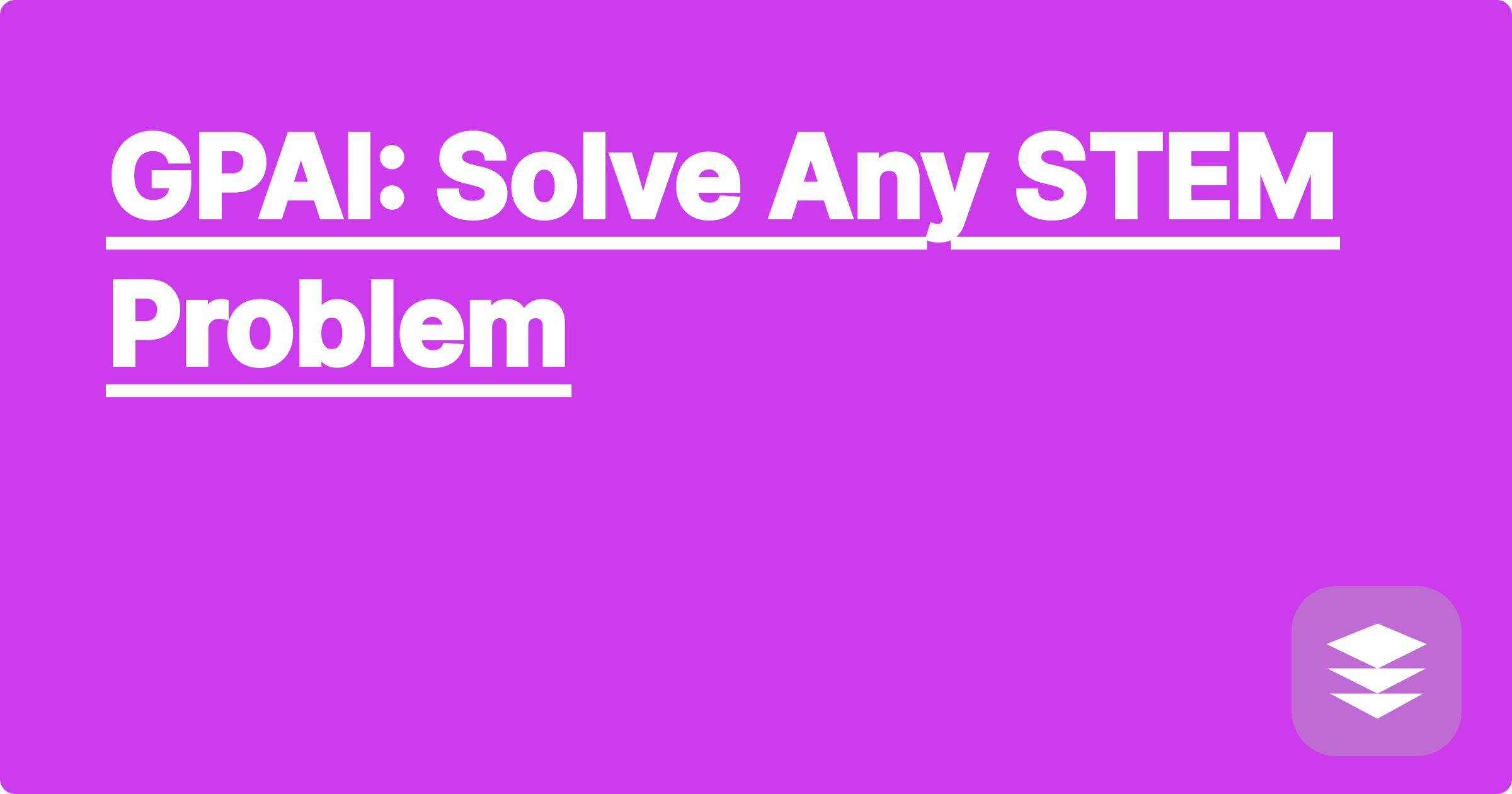
The world of STEM presents a constant barrage of complex problems, ranging from abstract theoretical concepts to intricate practical applications. These challenges often demand significant time, resources, and expertise to overcome. Artificial intelligence (AI) is emerging as a powerful tool with the potential to revolutionize how we approach and solve these STEM problems, offering new avenues for exploration, analysis, and innovation. AI can assist with everything from formulating research questions to analyzing complex datasets and even generating code, significantly accelerating the pace of discovery and learning.
This transformative potential of AI has profound implications for STEM students and researchers. By leveraging these powerful tools, students can gain a deeper understanding of complex concepts, explore diverse solutions, and develop critical thinking skills essential for success in STEM fields. Researchers can accelerate their work, analyze larger datasets, and uncover hidden patterns, leading to groundbreaking discoveries and advancements. Mastering the use of AI in STEM is no longer a luxury but a necessity for those seeking to stay at the forefront of their respective disciplines.
Many STEM problems involve complex systems with multiple interacting variables. For example, predicting the trajectory of a rocket involves considering factors like gravity, air resistance, thrust, and the rotation of the earth. These factors are often intertwined, making it challenging to isolate their individual effects and predict the overall outcome. Similarly, understanding the behavior of a complex chemical reaction requires knowledge of reaction kinetics, thermodynamics, and the properties of the reactants and products. These problems often involve intricate mathematical models, differential equations, and statistical analysis, requiring significant computational power and expertise to solve. Furthermore, many STEM problems involve analyzing large datasets, such as genomic data, climate data, or astronomical observations. Extracting meaningful insights from these datasets requires sophisticated data processing and analysis techniques.
AI tools like ChatGPT, Claude, and Wolfram Alpha offer powerful capabilities for tackling these complex STEM problems. ChatGPT and Claude can be used to generate explanations of complex concepts, brainstorm potential solutions, and even generate code in various programming languages. Wolfram Alpha excels at symbolic computation, solving equations, and providing detailed information on a wide range of scientific topics. By combining these tools strategically, STEM students and researchers can significantly enhance their problem-solving capabilities. For instance, one can use ChatGPT to understand the underlying theory behind a particular problem, then use Wolfram Alpha to perform the necessary calculations and simulations. This synergistic approach allows for a more comprehensive and efficient problem-solving process.
Let's consider the problem of modeling the trajectory of a projectile. First, one would clearly define the problem parameters, such as the initial velocity, launch angle, and air resistance coefficient. Next, one could use ChatGPT to explain the relevant physics concepts, like projectile motion and air resistance. ChatGPT can also provide the necessary equations governing the projectile's motion. Then, Wolfram Alpha can be used to solve these equations numerically, providing the projectile's trajectory as a function of time. Finally, one can visualize the trajectory using plotting tools available within Wolfram Alpha or by exporting the data to other visualization software. This process demonstrates a practical application of combining AI tools to solve a classic STEM problem.
Consider the problem of calculating the volume of a complex three-dimensional shape. Defining the shape's boundaries using mathematical equations is the first step. Then, Wolfram Alpha can be used to compute the volume integral, providing a precise numerical value. Another example involves analyzing a dataset of gene expression levels. One can use ChatGPT to understand the biological context of the data and formulate relevant research questions. Then, specialized AI tools for data analysis can be used to identify patterns and correlations within the dataset, potentially leading to new biological insights. Furthermore, consider the task of writing code to simulate a chemical reaction. ChatGPT can be used to generate the initial code framework, while Wolfram Alpha can assist with calculating reaction rates and equilibrium constants. These examples illustrate the versatility of AI in addressing a wide range of STEM challenges.
Effectively integrating AI into STEM education and research requires a strategic approach. It is crucial to understand the strengths and limitations of each AI tool. ChatGPT excels at generating text and code, while Wolfram Alpha is more suited for symbolic computation and data analysis. Using the right tool for the right task is essential for maximizing efficiency. Critically evaluating the output of AI tools is equally important. While these tools can be incredibly powerful, they are not infallible. Always verify the results and ensure they align with existing knowledge and theoretical frameworks. Furthermore, using AI should complement, not replace, traditional learning and research methods. Developing a strong foundation in fundamental STEM concepts is essential for effectively utilizing AI tools.
Concluding, AI offers unprecedented opportunities for STEM students and researchers to tackle complex problems and accelerate the pace of discovery. By embracing these powerful tools and integrating them strategically into their workflow, students and researchers can unlock new levels of understanding, innovation, and efficiency. Exploring the diverse applications of AI in STEM and continuously honing your skills in using these tools are the next crucial steps towards maximizing your potential in these fields. The future of STEM is intertwined with the advancement of AI, and those who master these tools will be best positioned to shape that future.
AI Robotics: Simulation & Design
Chemistry AI: Study & Practice
Bio AI Solver: Biology Problems